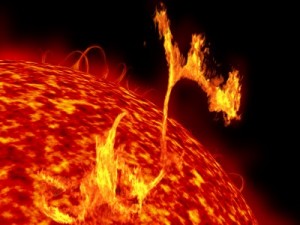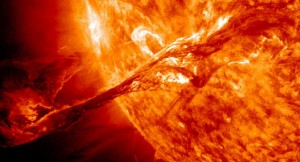
Comet C/2013 R1 Lovejoy – Photo by Gerald Rhemann on December 13, 2013 @ Jauerling, Lower Austria
What a magnificent comet!
Filled with knots and eddies of dusty plasma, Lovejoy’s tails stretch more than 20 degrees across the sky — long enough to overlap 40 Full Moons or fill the bowl of the Big Dipper, twice.
On December 23, 2013, the comet will be just inside the orbit of Earth (0.82 AU) during its closest approach to the sun or “perihelion.” The extra heating it gets at perihelion will grow its tails even more.
Shines Like A Star
Comet Lovejoy shines like a 4th magnitude star, so it is barely visible to the naked eye, especially when the sky is filled with full moonlight. However, the comet is a fairly easy target rising ahead of the sun in the eastern morning sky using a backyard telescope.
If you have a GOTO telescope, send it to these coordinates. Slight pointing errors are no problem because the tail is almost too broad to miss.
Here are some sky maps to reference locating Lovejoy: Dec. 18, 19, 20. They will be useful through December 23.





